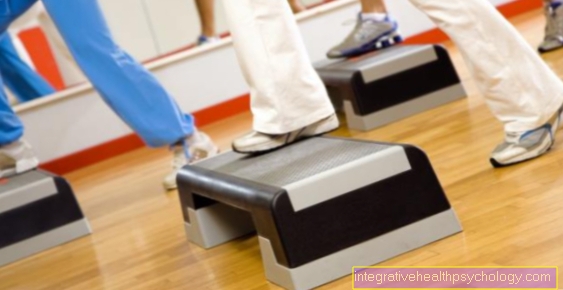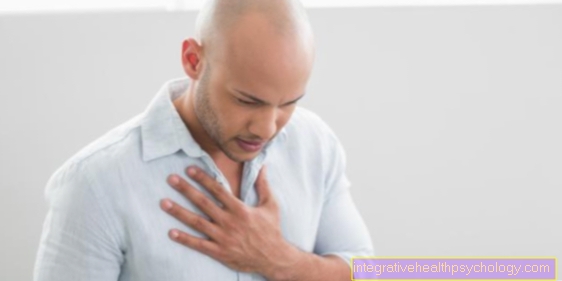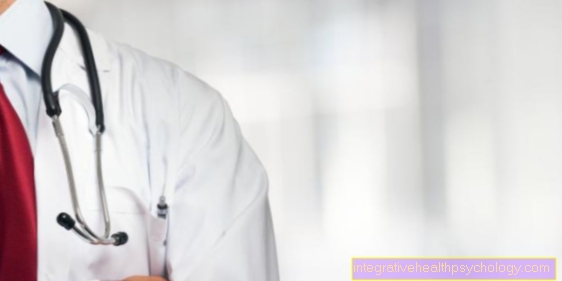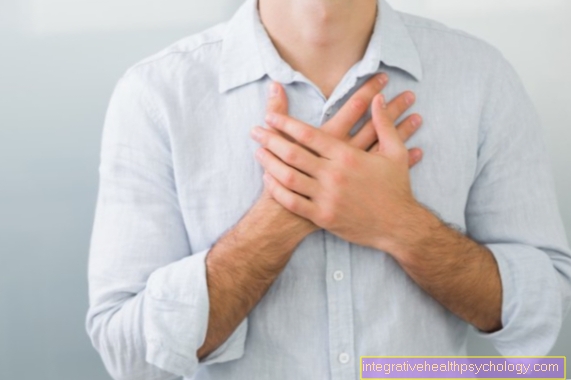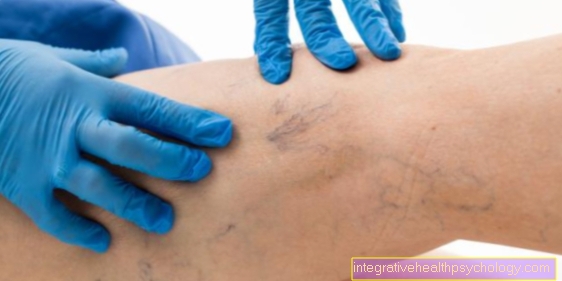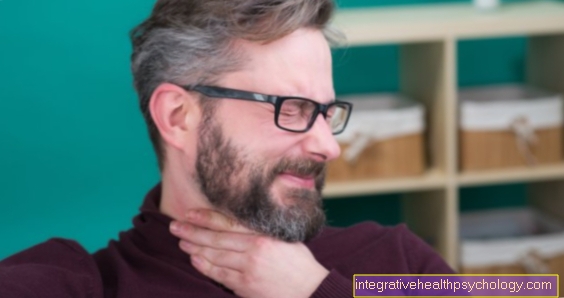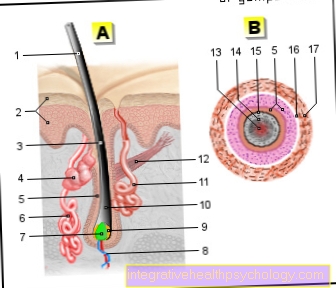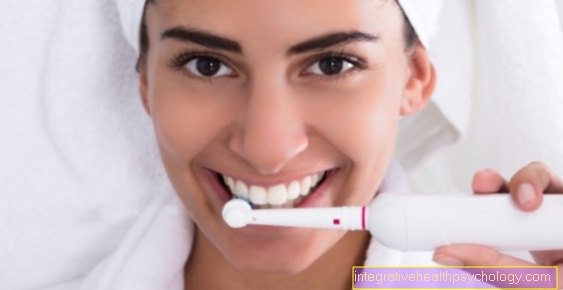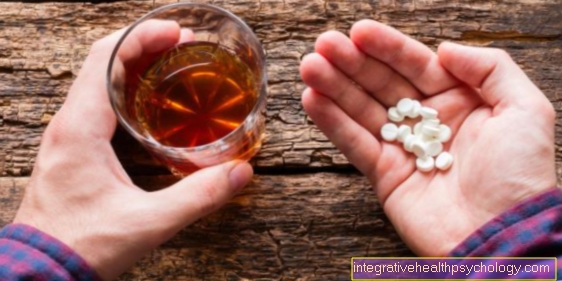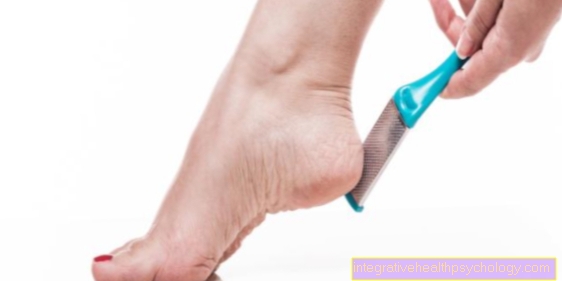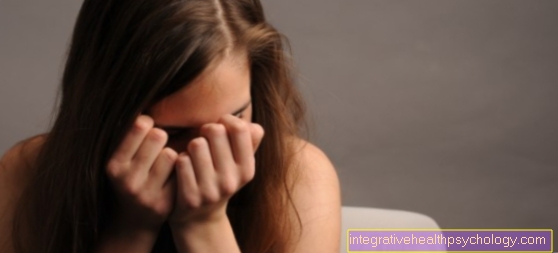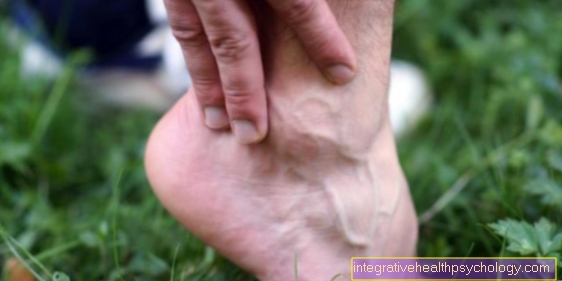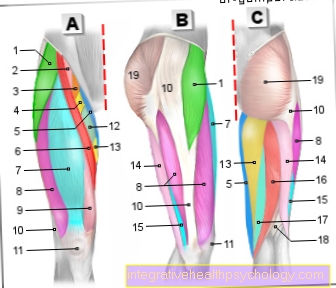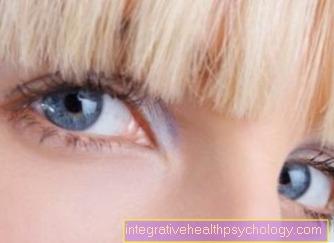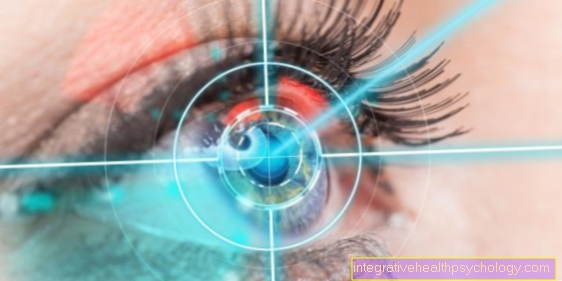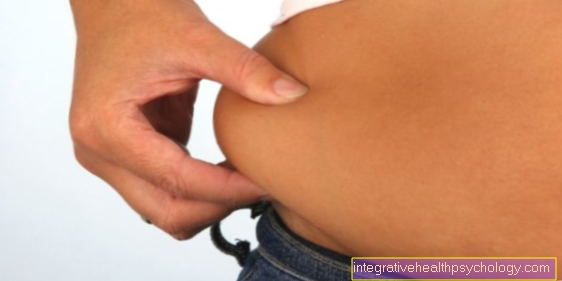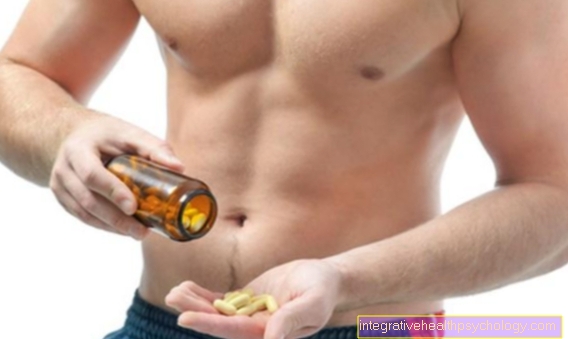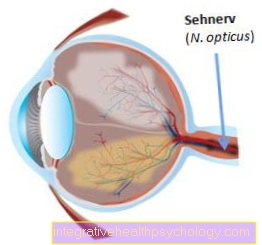Puberty
introduction
Puberty is the phase between childhood and adulthood when there are significant physical and psychological changes.
The secondary sexual characteristics become pronounced, sexual maturity and growth spurts occur. In addition, this phase is divided into prepuberty and post-menarche. In girls, puberty begins about 2 years earlier than in boys.
Prepuberty begins around the age of 9 with the first physical changes and ends on average in the age of 13 with the onset of the first menstrual period (menarche). The subsequent period up to the age of 15, during which the monthly cycle becomes increasingly regular, is called postmenarche.

What happens in puberty?
There are many changes in the body and mind of young people. The previously child's body develops the externally visible sexual characteristics, such as beard growth in boys and breast growth in girls.
The body's hormonal balance is also changed. More gender-specific hormones such as testosterone and estrogen are produced. In boys, the production of sperm begins and in girls the first menstrual period occurs, which shows the beginning of fertility. In addition to the gender characteristics, there is also a general growth spurt. By changing the percentage of fat in the skin, adolescents often get acne and oily hair.
There are also psychological changes. The young people react more emotionally to stressful situations and set themselves apart from their parents through sometimes provocative behavior. In rare cases, these developmental steps occur much earlier or much later than normal.
Physical changes during puberty
The beginning of the physical changes can be caused by the first breast development (Thelarche; see also topic Female breast) and by the onset of pubic hair (Pubarch) are displayed.
There are usually 5 stages in breast development. The volume of the breast and the size of the nipple increase steadily. The nipple initially rises above the level of the breast, but in stage 3 it is again at the level of the breast, and in stage 4 it again stands out from the rest of the breast contour. Some women keep this shape of the breast, but usually the final stage of development occurs when the nipple adapts to the rest of the breast level.
Pubic hair development usually begins with some fluff on the labia majora and the mons pubis (mons pubis) and spreads continuously until the typical triangular shape with a horizontal border upwards is created. The density and pigmentation of the pubic hair increase steadily.
The release of sex hormones causes a change in body composition in boys in favor of muscle mass, in girls in favor of adipose tissue.
The growth spurt is determined by sex hormones and growth hormones, with the female sex hormone estrogen accelerating this process and causing growth to stop earlier. Girls therefore have their growth spurt much earlier than boys, most pronounced before their first menstrual period.
The hormonal changes are shaped by the adrenarche and gonadarche. The adrenarche represents the beginning of the release of male sex hormones from the adrenal cortex, which is shown by the development of the pubic hair. With the gonadarche the stimulation for the release of sex hormones by the pituitary gland begins (Pituitary gland) and higher-level centers.
also read: What happens in puberty?
Growth spurt in puberty
The growth spurt is triggered during puberty by the male hormone testosterone. This is also present in smaller quantities in girls and thus leads to the growth spurt in girls too. Estrogen also has a growth-promoting effect.
The hormones act on bone growth, which is why some teenagers develop pain if they grow too quickly. The growth spurt is completed with the closure of the growth plates. After this closure, the bones can no longer grow in length.
Read more on this topic: Pain on the growth spurt
Puberty in boys
Puberty begins on average at twelve years of age in boys, two years later than in girls.
The onset of puberty is not yet visible to the outside world and is characterized by a change in hormones in the body. This happens as early as around nine years of age. The first visible sign of the onset of puberty is testicular growth. By definition, a testicle volume over three millimeters indicates the onset of puberty. Pubic hair also begins to grow. The penis increases in size.
At around 13 years of age, sperm production starts in the testicles. The quality of the sperm only increases in the course of the further months and years.In addition to the external sexual organs, there is significant body growth and an increase in the proportion of muscle in the body mass. Furthermore, the beard begins to grow, which is only fully developed after puberty.
Due to the influence of the hormones, the vocal folds also change and the boy's voice becomes deeper after this development is completed. Increased perspiration leads to body odor, greasy hair and acne.
Puberty in girls
In girls, puberty begins around the age of ten, two years earlier than in their male peers. Even in girls, the first hormonal changes are not externally visible. The body begins to produce large amounts of female hormones such as estrogen and small amounts of male testosterone. The first physical change can be seen in breast growth. The breasts often do not grow symmetrically at first, but the difference is usually evened out at the end of the development.
The testosterone continues to grow pubic hair in the armpit and pubic area. Just like their male peers, girls experience a growth spurt. However, the body's growth is already over much earlier than in the boys. The body has typically feminine features, like a wider pelvis.
The last step of female puberty is the onset of the menstrual period and thus the beginning of sexual maturity. This happens at an average of 12.8 years and depends on the nutritional status. As with the boys, acne and greasy hair occur due to an increased percentage of fat in the skin.
Breast growth during puberty
Sex hormones are increasingly released during puberty. In girls, these are especially estrogens, estradiol and prolactin.
These hormones cause the female breast to grow. Puberty is associated with reaching sexual maturity, which is why the girl's body adjusts to the care of an infant. Because of this, the mammary glands mature. An increase in breast tissue is also possible in boys during puberty. This usually regresses after two years.
More on this: Puberty gynecomastia
Weight gain during puberty
During puberty, the child's body becomes an adult body. In girls, this means that fat tissue grows in the hip area. Boys develop a greater percentage of muscle. Both lead to weight gain, which is part of normal development. During puberty, the body needs a lot of energy for various remodeling processes.
When there is an oversupply of food, the body stores this energy in the form of fat for later use. In girls, the accumulation of energy reserves is also associated with preparation for a possible pregnancy.
Oily hair in puberty
Children's skin is high in water and low in fat. This relationship is changed during puberty.
In the beginning, the sebum glands in the skin can cause an overproduction of sebum. This leads to hair greasy quickly. At the end of puberty, an equilibrium is usually established so that the hair no longer becomes greasy as quickly. However, washing does not increase sebum production. The young people can therefore wash their hair every day without any problems in order to feel more comfortable.
Also read:
- What can you do about oily hair?
- Home remedies for oily hair
Odor of sweat during puberty
In childhood, sweat is almost odorless. However, puberty is another way of working sweat glands. These are particularly located in the genital area and the armpits.
Teenagers sweat more than children and adults. The composition of body sweat also changes. Sweat contains certain substances, such as urea and lactic acid, which are metabolized by bacteria on the skin. The longer the sweat is on the skin, the stronger the smell becomes.
You may also be interested in this topic: Excessive sweating
Stages of puberty
The stages of puberty vary between the sexes and there are many different ways to classify them. In both sexes, the beginning of the physical changes is a pure hormonal change and is therefore not externally visible.
- This marks the beginning of pre-puberty and usually starts at the end of elementary school. The children begin to withdraw and develop a feeling of shame in front of their parents too. Regulations and rules are often ignored or discussed at length. Boys in particular develop a strong urge to move. This phase usually lasts one to two years.
- The high phase of puberty usually takes place between the ages of 12 and 16. The physical and mental development is now clearly visible. The adolescents become sexually mature and often gain their first experiences with the opposite sex. Parents of the same age act as contact persons for many problems.
- Late puberty begins after the age of 16. The actual physical changes are complete and the young people break away from their parents. However, the discussions between parents and children are clearly decreasing. Puberty will complete and girls and boys will grow up.
Learn more about this at: Stages of puberty
How long does puberty last?
The duration of puberty can be assessed differently. The main phase of puberty between the ages of 12 and 16 lasts approximately four years. However, this varies greatly from person to person. Even the beginning of puberty depends on many factors.
Today puberty begins relatively early, which is attributed to the good nutritional status of the children. The entire period of puberty from the beginning of the hormonal changes to the complete completion of all changes can take over ten years, but this is not perceived by the adolescent and the parents.
Most of the assessments also refer to the high phase of puberty, as this is the time when many conflicts take place in the family and everyone involved perceives this phase as exhausting.
Puberty does not start spontaneously, but is a slow development, which makes it difficult to determine an exact point in time as a start. Likewise, the end of puberty cannot be fixed on a day.
What happens in the brain during puberty?
The first physical changes during puberty take place unnoticed in the brain. The pituitary gland, which is in the front, at the bottom of the brain, begins to produce more gonadotropins. This happens under the influence of the hypothalamus, which releases a hormone called the gonadotropin-releasing hormone. So a hormone that leads to the release of other hormones.
The gonadotropins grow the sex glands, which in turn produce sex hormones such as testosterone and estrogen. Another change in the adolescent brain is that some nerve connections break down and many new connections form. The anterior lobe of the brain, which is important for personality and rational decisions, is particularly affected.
That explains in part the mood swings during puberty. A study has shown that during puberty, an area of the brain is responsible for decisions that normally processes emotions. This later shifts back into the anterior lobe. During this rebuilding phase, the brain is particularly sensitive to drugs and alcohol.
Why do mood swings occur?
During puberty, the body and with it the brain are subject to many restructuring processes. The hormonal fluctuations and the remodeling, which also affects the areas in the brain responsible for the emotions, lead to mood swings.
In addition, the areas that are responsible for emotions are much more active and are partly used for decision-making. Associated with many insecurities and a lack of self-esteem, the young people react emotionally to stress and criticism. Girls tend to react quickly with tears and sadness, while boys tend to break out in aggressive behavior.
More information on this topic: Mood swings
Fatigue During Puberty
The brain and the hormonal balance are subject to major changes during puberty. The pineal gland in the brain is responsible for the production of the sleep-promoting hormone melantonin, which forms an internal clock.
In adolescents, this hormone is released on average two hours later and the breakdown is also postponed by two hours. As a result of this shift, the adolescents can sleep later and are still very tired in the morning.
Read more on this topic:
- fatigue
- Sleep hygiene
Headache during puberty
The exact cause of headache during puberty is not yet understood. However, it is believed that increased stress and a lack of opportunities to deal with this stress are a risk factor. For many teenagers, a tight neck is a cause of headaches.
This is presumably due to increased media consumption, as the neck muscles are used more intensively. To avoid a vicious circle of pain and stress, young people need to learn to relax and find a balance between school and other responsibilities.
Long-term use of painkillers has many side effects, which often only become apparent after a few years.
Disorders and clinical pictures of puberty
During the sensitive psychological and physical development period of puberty, a number of clinical pictures arise that require medical intervention.
Tall stature in puberty
Tall stature means when the person in question is taller than 96% of all their peers. Usually the cause lies in a family disposition.
The therapy takes place here with female sex hormones (Estrogens, progestins), as these accelerate bone maturation and thus lead to an early termination of bone growth. However, the therapy must take place before the growth spurt if the bone age is less than 12 years. This means that the x-ray shows the level of bone growth that is common before the age of 12.
After about 2 years of therapy, the treatment can be stopped, the bone age should be about 15.5 years (the child is younger).
Depression in puberty
Mood swings and emotional outbursts are normal during puberty. Not only do hormonal and physical changes take place, but the young people are also slowly growing up emotionally. During this development the adolescents react very sensitively and emotionally to stress and criticism, while however they themselves think very critically about their body.
In some adolescents, these mood swings become abnormal and they develop depression. Depression is the most common mental illness in Germany and in half of all cases this illness begins during puberty.
A depression differs from a depressed mood mainly in the duration of the symptoms. Girls are affected twice as often as boys. The young people report an inner emptiness, joylessness and low self-confidence up to thoughts of suicide. Depression in adolescence is often accompanied by other mental illnesses.
These include anxiety disorders, social disorders, substance abuse, and eating disorders. Depression is curable in over 80%. A combination therapy consisting of psychotherapy and medication is usually best suited for this. The goal is to relieve tension and restore self-confidence.
Depression is a serious illness and not just an episode that goes away.
Read also below:
- Depression - important information for relatives
- Consequences of drugs
Precocious puberty
This leads to a premature onset of puberty with development of the secondary genital organs before the age of 8. The premature growth spurt leads to a premature termination of growth with a reduced final size.
In true precocious puberty, the cause is often in the brain. It can also occur following an accident or inflammation - often no cause can be found. The therapy is medicated with so-called GnRH analogues, which throttle the production of sex hormones and thus postpone puberty. This can usually also prevent short stature.
The pseudopubertas praecox often arises from tumors of the ovaries or adrenal gland tumors. Other disorders can also be the cause. After a detailed diagnosis, the therapy has to treat the causal disorder.
Incomplete precocious puberty is when only the first menstrual period, breast development or the release of hormones from the adrenal cortex start prematurely. Therapy is usually not necessary here.
Puberty tarda
Pubertas tarda is a delay in the onset of puberty, with the absence of the first menstrual period up to the age of 16 or absence of any signs of puberty up to the age of 14.
The most common cause lies in the malformation of the genital organs with a lack of function of the ovaries, as they are e.g. occurs in Ulrich-Turner syndrome. The brain can also be causally involved. Particular mention should be made of tumors and hypofunction of the pituitary gland (pituitary gland) and the Kallmann syndrome. Eating disorders, competitive sports and serious underlying diseases can also have a massive impact on the onset of puberty.
A chromosome analysis is performed diagnostically to rule out Turner syndrome. A so-called GnRH test is carried out to determine how the brain functions in relation to the hormonal balance.
After the treatment of the underlying disease, the therapeutic replacement of female sex hormones is in the foreground.
Puberty gynecomastia
Gynecomastia is breast growth in men. This can have both pathological and normal causes. Puberty gynecomastia is a standard variant. This affects about half of all boys in adolescence and most of them regress within two to three years.
Gynecomastia must be distinguished from the pure accumulation of fat in the chest area, which occurs in overweight boys. In rare cases, puberty gynecomastia does not resolve in adulthood. In the case of great suffering, the mammary gland can be surgically removed.
In any case, however, a more detailed examination must be carried out in order to rule out pathological processes. First a palpation examination is done and an ultrasound is carried out. Puberty gynecomastia can also only occur unilaterally. Physical symptoms can include a feeling of tightness and tenderness. Much more important, however, is the emotional strain on young people.
Learn more about this at: Puberty gynecomastia
Acne vulgaris
Due to the increased influence of male sex hormones (androgens), this skin disease occurs in around three quarters of all adolescents.
Affected are the sebum glands, which clog due to increased sebum production and excessive cornification. Initially, blackheads (comedones) form and heal without scars. If these blackheads become inflamed, papules and pustules ("pimples") develop, which leave scars after they have healed. In addition to the male sex hormones, smoking, stress and the wrong care products are also conducive to the development of acne. In addition to the physical complaints, especially severe acne causes psychological stress for young people.
Treatment should be given in dermatological hands (dermatologist). Treatment with the fruit acid alpha-hydroxy acid and with salicylic acid is available, which can be used to improve the skin's appearance through regular peelings. Antibiotics should be used when there is severe inflammation. Benzoyl peroxide has an antibacterial effect and dissolves the horny layer so that the excessive sebum can be removed. The use of linoleic acid and vitamin A acid also helps against acne symptoms. In particularly severe cases, taking isotretinoins can help. As a rule, however, acne can be expected to go away by the age of twenty.
- acne
- Acne therapy
- Acne Diet
Why do you get pimples during puberty?
As the hormones in the body change, so does the composition of the skin. In children, the water content of the skin is very high and the fat content is rather low. With the onset of puberty, the percentage of fat in the skin increases and skin blemishes occur. The sebum glands produce more sebum and at the same time a thickened horny layer forms on the skin. This horny layer can block the sebum glands so that the sebum collects underneath. If manipulated from the outside, these sebum glands can also become inflamed and continue to grow in size.
The male hormone testosterone is responsible for skin changes during puberty. Therefore, male adolescents often struggle with acne even more than their female peers. In many cases, as the hormones are balanced at the end of puberty, acne also subsides.
The main problem with pubertal acne is that adolescents are psychologically sensitive and therefore often suffer from pimples and permanent scars. With severe acne, however, a significant improvement can be achieved with medication.
You might also be interested in: How to Get Rid of Pimples
Eating disorders during puberty
The changes in the female body in favor of curves can easily lead to rejection reactions in young girls. If further psychological conflicts or even bad sexual experiences occur, this can lead to an eating disorder.
Typical eating disorders that can develop are:
- Anorexia nervosa
- bulimia
- Binge Eating Disorder
In the case of anorexia nervosa, severely restrictive eating behavior, vomiting, the use of laxatives or appetite suppressants and excessive exercise lead to severe weight loss. By definition, the body mass index (BMI, body weight in kilograms divided by height in m) for anorexia is below 17.5. The low percentage of body fat leads to the absence of menstrual periods (amenorrhea). This life-threatening clinical picture should by no means be suppressed or played down. Psychotherapy should be initiated as soon as possible.
In bulimia there are binge eating and vomiting. The stomach acid causes massive damage to the teeth. The salivary glands swell and electrolyte imbalances can have dangerous consequences. Bulimia often develops out of anorexia when the cravings get out of hand. Here too, psychotherapy is urgently needed.
In binge eating disorder, binge eating occurs without vomiting. Obesity is the logical consequence.
Also read our topics:
- Therapy of eating disorders
- What are the consequences of anorexia?
Typical problems of puberty
Most problems in puberty can be found in the interpersonal sphere. The young people try to differentiate themselves from their parents' household through sometimes provocative behavior. In most cases this means that rules are not being followed and that the young people react very emotionally to criticism. However, these are normal behaviors during puberty.
Some adolescents exceed limits that can be harmful to health. Irresponsible handling of alcohol and the consumption of illegal drugs are part of everyday life for some young people. The parents often have no control here, as their peers replace them as role models.
Another problem area in puberty is sexual education. Often adolescents already have experiences with sexuality before their parents or school educate them about this topic. To prevent unwanted pregnancies and sexually transmitted diseases, it is important to make it clear to the son or daughter at an early stage that you are available for discussions.
Many parents lose the familiar connection with their child during their child's puberty and the son or daughter looks for other people they can trust. In most cases, the parent-child relationship calms down after puberty is over.


